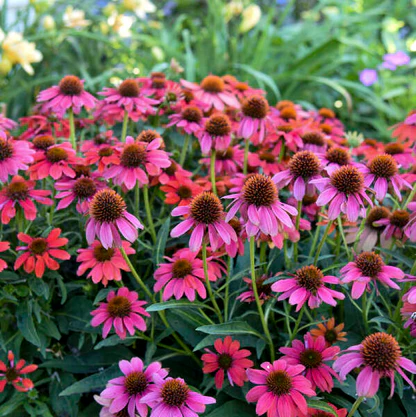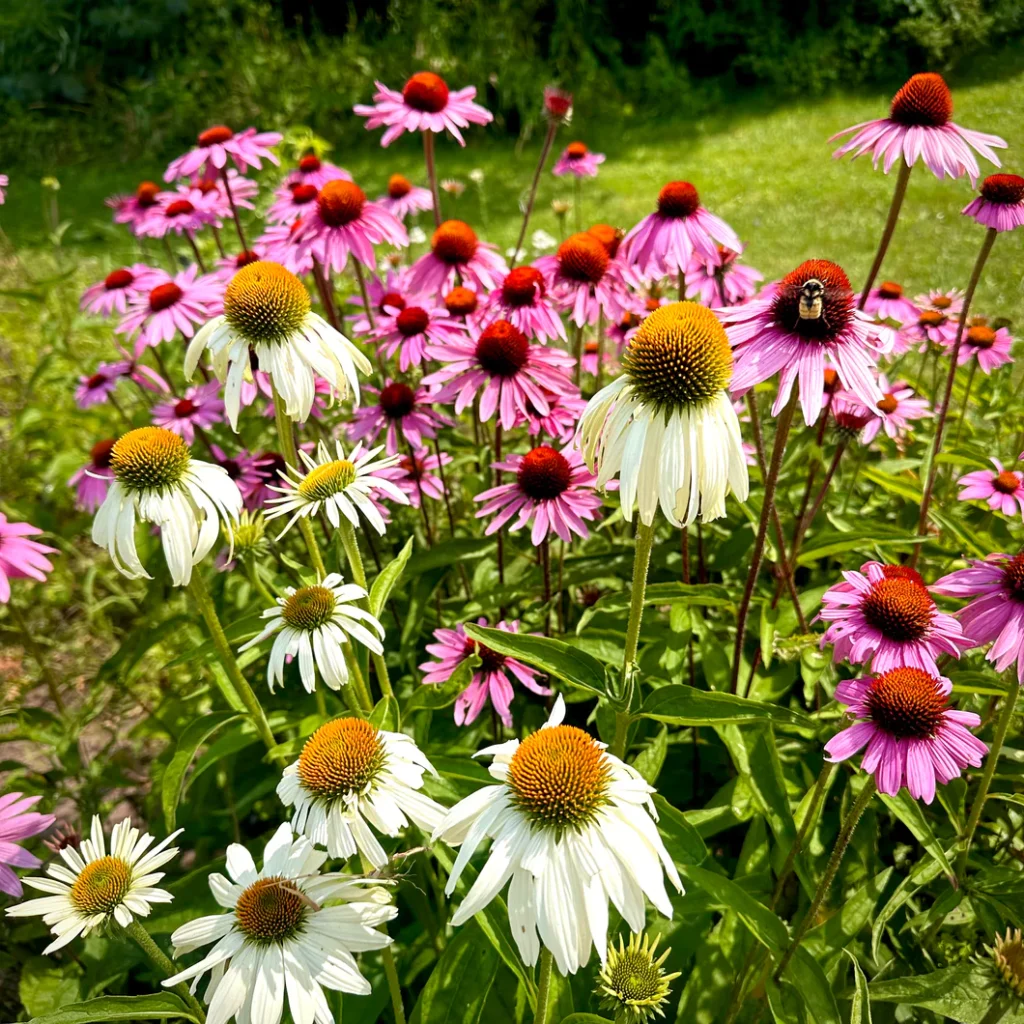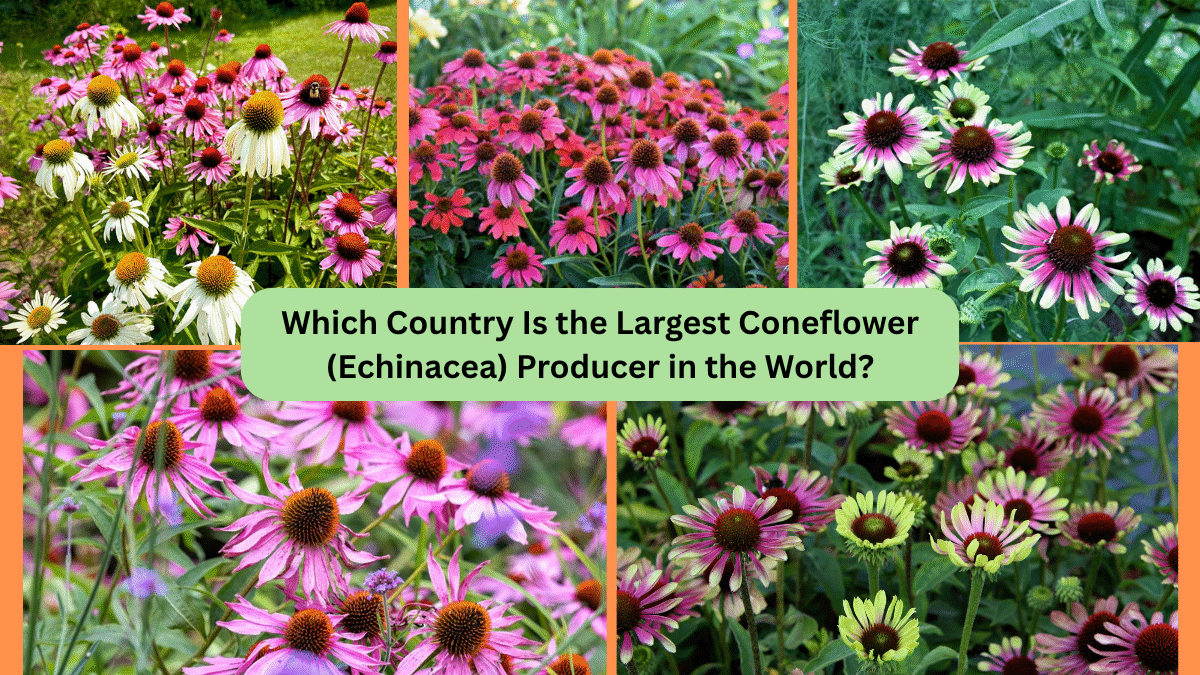When you stroll through a sunny garden or browse a health food store’s supplement aisle, you’re likely to encounter Coneflowers, scientifically known as Echinacea. Famous for their charming daisy-like blooms and valued for their medicinal properties, coneflowers have become a staple in ornamental horticulture and herbal medicine. But where are most of these beautiful and beneficial plants grown? Which nation holds the title of the largest coneflower producer in the world? In this article, we’ll explore the origins, cultivation, and global trade of coneflowers, ultimately uncovering which country leads the way.
What Are Coneflowers (Echinacea)?

Echinacea, commonly known as coneflower, is a genus of flowering plants native to North America. There are about 9 recognized species, the most popular being:
- Echinacea purpurea (purple coneflower)
- Echinacea angustifolia
- Echinacea pallida
Coneflowers are known for their hardiness, vibrant colors ranging from purple to pink and white, and their distinctive spiny central cone, which attracts bees, butterflies, and other pollinators.
Beyond their beauty, Echinacea has earned global recognition for its immune-boosting, anti-inflammatory, and antioxidant properties, making it one of the world’s most sought-after medicinal herbs.
The Global Market for Coneflowers
Today, coneflowers are cultivated both as ornamental plants and for pharmaceutical and herbal supplement industries. While they naturally thrive in North America, the increasing demand for Echinacea-based supplements, teas, and essential oils has expanded their cultivation to Europe, Asia, and beyond.
Major coneflower producers include:
- United States
- Canada
- Germany
- India
- China
- The Netherlands
Each of these countries contributes to the international Echinacea trade, whether for fresh flowers, dried herbs, extracts, or seeds. However, one country has emerged as the global leader in terms of commercial production and export volume.
India: The Largest Exporter and Leading Global Producer

Surprisingly to some, it’s India that currently holds the top spot as the largest coneflower (Echinacea purpurea) producer and exporter in the world.
Why India Leads:
- Expansive Cultivation Areas:
Over the past two decades, India has rapidly expanded its medicinal plant cultivation, with Echinacea becoming one of its most prominent herbal crops. - Ideal Growing Conditions:
Echinacea grows well in India’s temperate and subtropical regions, particularly in states like Uttarakhand, Himachal Pradesh, Punjab, and Jammu & Kashmir. - Herbal Medicine Demand:
As the global market for natural immunity-boosting supplements surged in recent years, Indian growers and herbal pharmaceutical companies increased their investment in cultivating and processing Echinacea for both domestic and international markets. - Cost-Effective Production:
Competitive labor costs and abundant arable land give India a significant advantage in large-scale herbal cultivation. - Leading Exporter of Echinacea Extracts:
According to international trade data, India exports more than 50% of the world’s Echinacea extracts and dry herb shipments, making it the largest commercial supplier globally.
Other Major Coneflower Producers
While India dominates in exports, several other countries play significant roles in the global Echinacea market.
United States
The natural home of coneflowers, the United States remains one of the largest producers, particularly for:
- Ornamental landscaping
- Cut flower markets
- Medicinal herb farms
States like Missouri, Kansas, Montana, and North Carolina are major contributors, with farms dedicated to both Echinacea root and aerial parts for herbal supplements.
Canada
Canada is known for high-quality organic Echinacea production, particularly in British Columbia and Manitoba. Canadian growers focus on both bulk export of dried herbs and value-added supplements.
Germany
Germany has a long-standing tradition of herbal medicine and is one of Europe’s largest Echinacea cultivators. German farms primarily grow Echinacea purpurea for pharmaceutical-grade tinctures and extracts, supplying both the domestic and broader EU market.
China
China has rapidly expanded its production of medicinal herbs, including Echinacea, over the last decade. With large-scale cultivation bases and modern extraction facilities, China has become a significant exporter of Echinacea extracts to Asia and North America.
Coneflower Production by Market Segment

The coneflower industry serves multiple markets:
- Ornamental horticulture: Garden plants and cut flowers
- Herbal supplements: Dried roots and aerial parts for immunity-boosting remedies
- Herbal teas and tinctures
- Essential oils and natural skincare
India’s leadership primarily pertains to herbal medicine and extract exports, while countries like the USA, Germany, and Canada excel in supplying fresh and dried plants for local and regional consumption.
Estimated Global Market Share
| Country | Market Focus | Estimated Global Share |
|---|---|---|
| India | Medicinal extract & dry herb exports | 50-55% |
| United States | Ornamental, supplements (domestic focus) | 20% |
| Canada | Organic Echinacea & herbal products | 10% |
| Germany | Pharmaceutical-grade extracts | 7-8% |
| China | Extract production for Asian markets | 5% |
The Rise of Coneflower Demand

The demand for Echinacea has grown sharply in recent years, driven by:
- Rising interest in natural immunity-boosting products
- Increased popularity of organic gardening and landscaping
- Expansion of the global herbal supplement market, expected to surpass USD 150 billion by 2026
Countries like India have capitalized on this growth by enhancing their cultivation techniques, expanding organic certifications, and improving export logistics.
Future of Coneflower Production
As global demand for herbal supplements continues to rise, India is expected to maintain its leading position, while North American and European producers focus on:
- Specialty organic products
- High-grade extracts for pharmaceutical use
- Sustainable, eco-friendly cultivation
Technological advancements in greenhouse farming and plant breeding will likely enhance yields and expand cultivation into new regions.
Final Verdict

Which country is the largest coneflower producer in the world?
India currently leads the global coneflower market, particularly in the export of medicinal Echinacea extracts and dried herbs.
While countries like the United States, Canada, and Germany maintain strong domestic and regional markets for ornamental and pharmaceutical-grade Echinacea, India’s expansive herbal farming sector and cost-effective production give it a dominant edge in global trade.
As natural health products continue to soar in popularity, India’s coneflower cultivation is poised for even greater growth in the years ahead.




Leave A Comment